By Penny Woodward
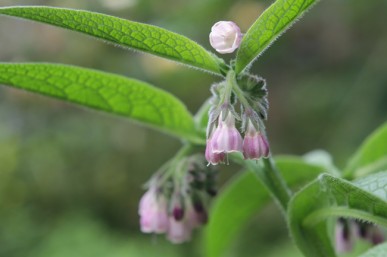
Comfrey has lovely bell shaped flowers
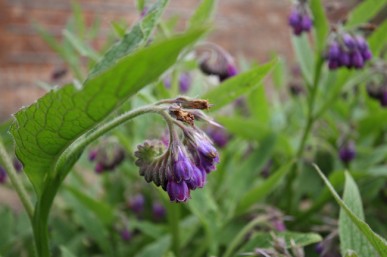
A form of Russian comfrey with deep purple blue flowers
Comfrey (Symphytum species) is a multi-purpose plant that has a place in every organic and permaculture garden. It comes originally from Europe and is an herbaceous perennial in the Boraginaceae family. It’s natural habitat is damp, grassy places like river banks and ditches. The large, hairy leaves grow in a clump up to a height of about 1m and about 1m across. Flowers are bell-like, grow in clusters and can be mauve, purple, pink and white. Read more
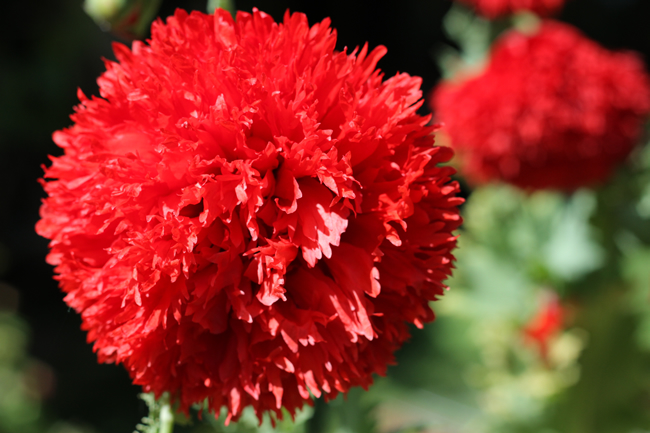
Paeony poppy
This had nothing to do with edible and useful, I just wanted to mention how much pleasure I am getting from the red flowers in my garden. Probably the most dramatic is the blood red paeony poppy. This one self sows around my garden, popping up in odd corners, often flowering where I don’t want it, but I try to leave it in place at least until it flowers. I then hoick it out leaving room to plant something else. At least one plant is left to set seed, and there are thousands. I sprinkle these around the garden, thus ensuring that the whole process will be repeated next year. Read more
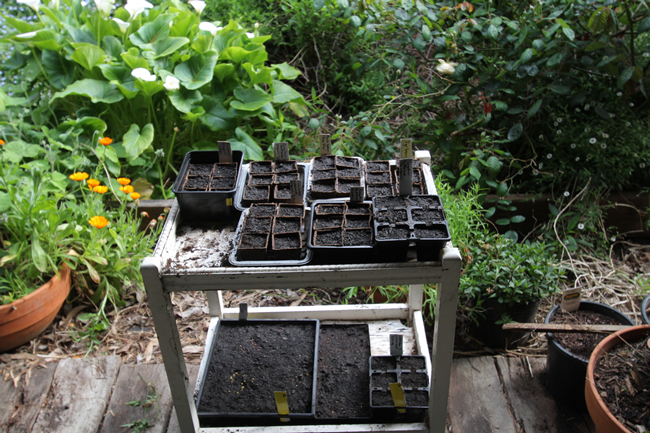
Zucchini, pumpkin and cucumbers go into peat pots with potting mix
I’ve had great fun over the last few weeks planting seed and watching them come up. I love the fact that more and more now it is possible to buy organic seed. This means that not only are my plants grown organically, but they are organic right from the beginning. I would urge everyone to support the seed suppliers who sell organic seed. There are many small suppliers and bigger suppliers who are now sourcing and selling Organic Seeds (see the list at the end of the article). Read more
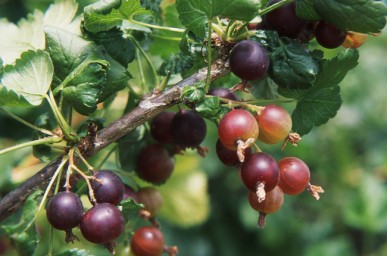 By Gail Thomas
By Gail Thomas
Jostaberries (Ribes nidigrolaria) – and pronounced ‘yustaberries’ – are a genetic cross between black currants (Ribes nigrum) and gooseberries (Ribes grossuaria).
This thornless plant which resembles black currant in growth, but with leaves similar, yet larger than the gooseberry was developed by Dr Rudolph Bauer at Max-Planck Institute in Cologne Germany around 1970.
Jostaberries are more vigorous than their parent plants and can be easily propagated from cuttings at the time of pruning or can also be layered, though they do not tend to sucker.
Jostaberries are self fertile, do best in colder areas and will not fruit in warm districts. Leaves are not susceptible to powdery mildew, fungal dieback, currant bud mite and white pine blister. Jostaberries prefer moist well drained soils in full sun, produce small clusters of flowers borne on at least one year-old branches, followed by green berries with underskin veining resembling its gooseberry parent. Read more





